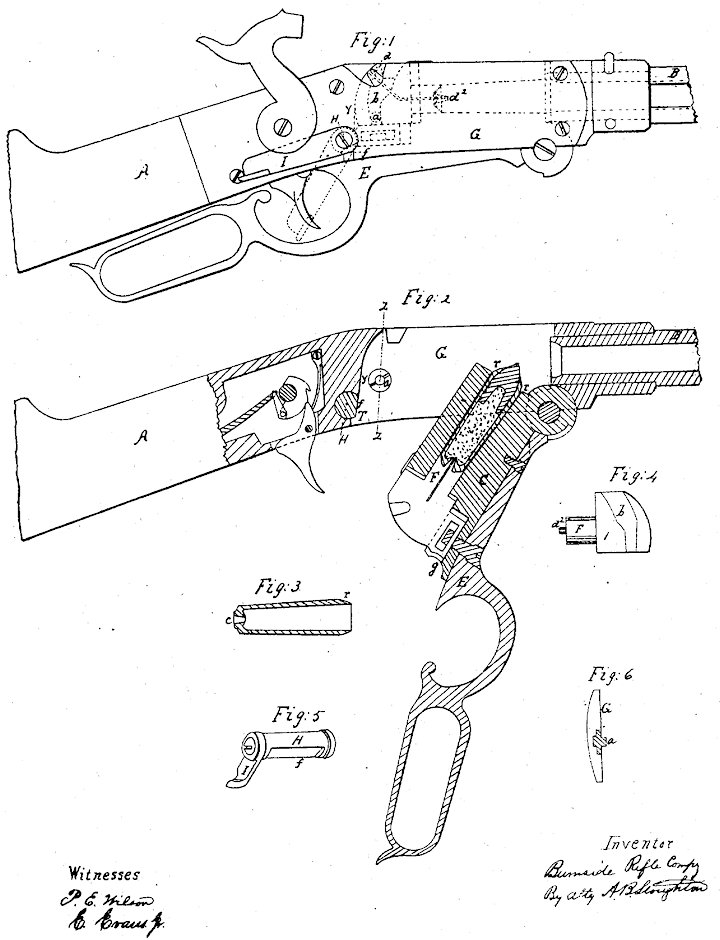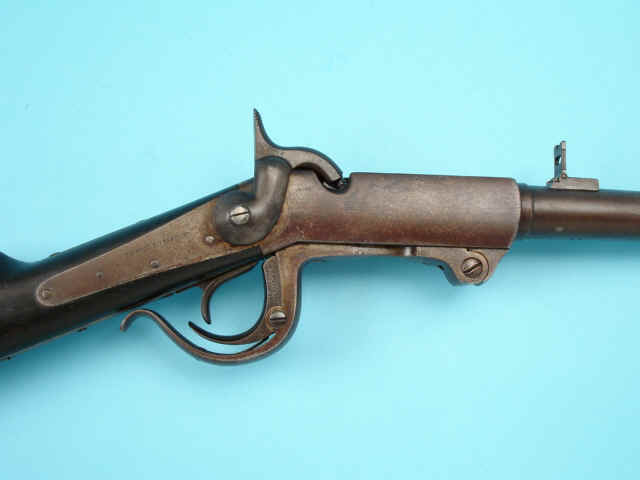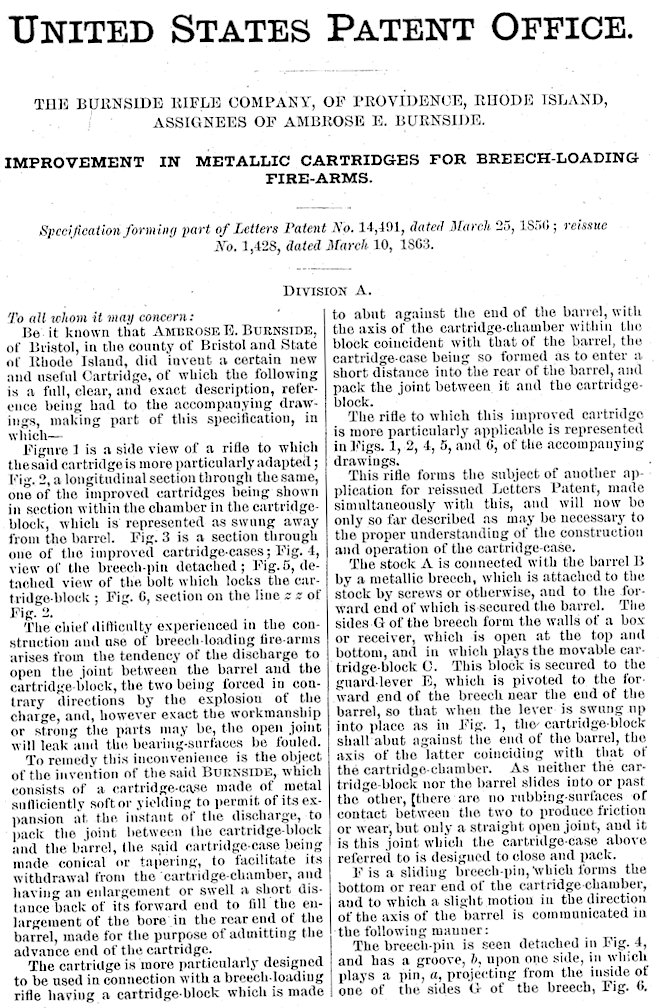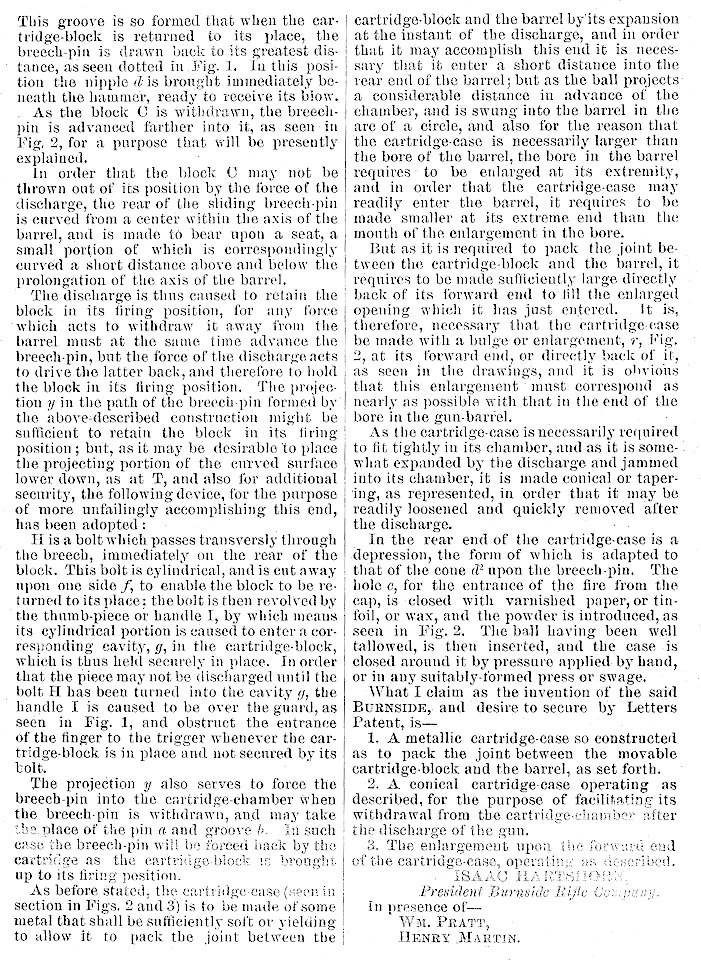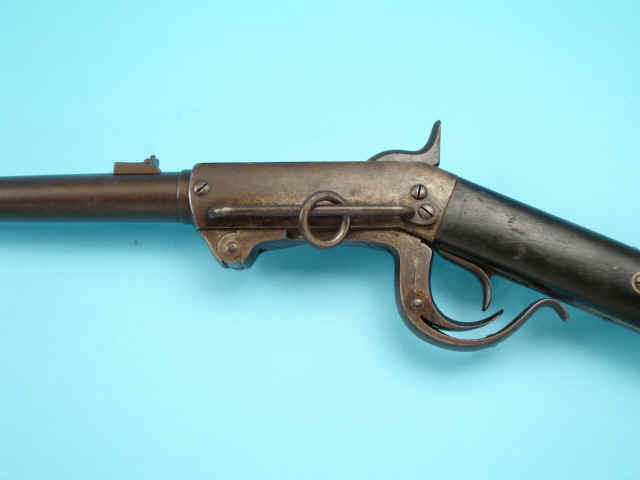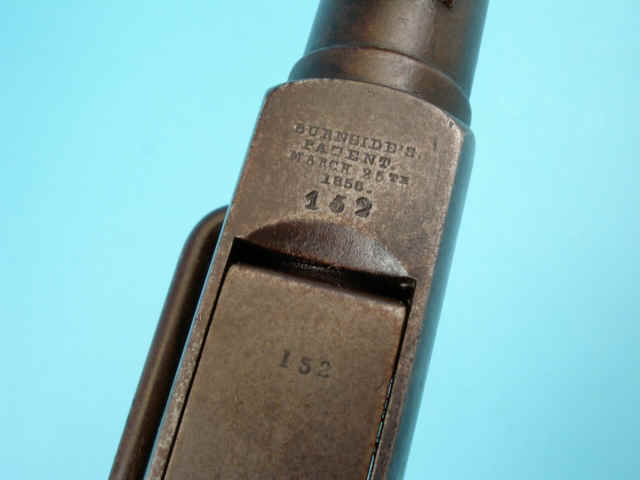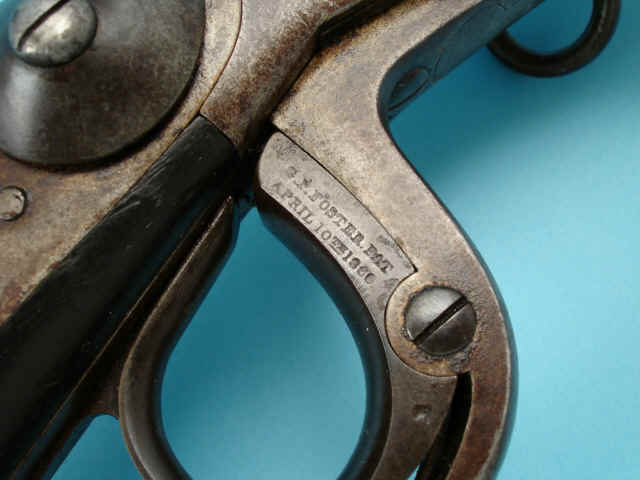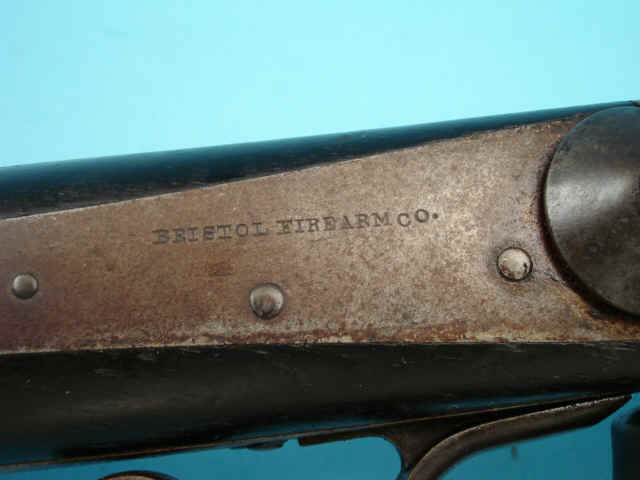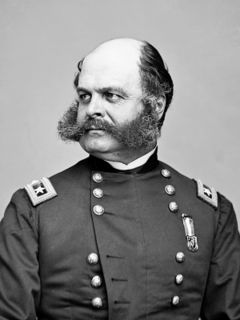|
Sold by Gregg Martin Auctions on 2/05/2007 for : $6,242.50
Ambrose Everett Burnside (May 23, 1824 – September 13, 1881) was an American soldier, railroad executive, inventor, industrialist, and politician from Rhode Island, serving as governor and a U.S. Senator. As a Union Army general in the American Civil War, he conducted successful campaigns in North Carolina and East Tennessee, but was defeated in the disastrous Battle of Fredericksburg and Battle of the Crater. His distinctive style of facial hair is now known as sideburns, derived from his last name. Burnside was born in Liberty, Indiana, the fourth of nine children of Edghill and Pamela (or Pamilia) Brown Burnside, a family of Scottish origin.[1] His father, a native of South Carolina, was a slave owner who freed his slaves when he relocated to Indiana. Ambrose attended Liberty Seminary as a young boy, but his education was interrupted when his mother died in 1841 and he was apprenticed to a local tailor, eventually becoming a partner in the business.[2] His interest in military affairs and his father's political connections obtained an appointment to the U.S. Military Academy in 1843. He graduated in 1847, ranking 18th in a class of 38, and was commissioned a brevet second lieutenant in the 2nd U.S. Artillery. He traveled to Veracruz for the Mexican-American War, but arrived after hostilities ceased and performed mostly garrison duty around Mexico City.[3] At the close of the war, Lt. Burnside served two years on the western frontier, serving under Captain Braxton Bragg in the 3rd U.S. Artillery, a light artillery unit that had been converted to cavalry duty, protecting the Western mail routes through Nevada to California. In 1849, he was wounded by an arrow in his neck during a skirmish against Apaches in Las Vegas, New Mexico. In 1852, he was appointed to the command of Fort Adams, Newport, Rhode Island, and, while there, he married Mary Richmond Bishop of Providence, Rhode Island, on April 27. The marriage, which lasted until Burnside's death, was childless.[4] In 1853, Burnside resigned his commission in the U.S. Army, although maintaining a position in the state militia, and devoted his time and energy to the manufacture of the famous rifle that bears his name, the Burnside carbine. The Secretary of War under President James Buchanan, John B. Floyd, contracted with the Burnside Arms Company to equip a large portion of the Army with his carbine, and induced him to establish extensive factories for its manufacture. The Bristol Rifle Works were no sooner complete than another gunmaker allegedly bribed Floyd to break his $100,000 contract with Burnside. Burnside ran as a Democrat for one of the Congressional seats in Rhode Island in 1858 and was defeated in a landslide. The burdens of the campaign and the destruction by fire of his factory also contributed to his financial ruin and he was forced to assign his firearm patents to others. He went west in search of employment and became treasurer of the Illinois Central Railroad, where he worked for, and became friendly with, one of his future commanding officers After his resignation, Burnside was employed in numerous railroad and industrial directorships, including the presidencies of the Cincinnati and Martinsville Railroad, the Indianapolis and Vincennes Railroad, and the Rhode Island Locomotive Works. He was elected to three one-year terms as Governor of Rhode Island (May 1866 to May 1869). He was commander-in-chief of the Grand Army of the Republic (GAR) veterans' association from 1871 to 1872.[19] At its inception in 1871, the National Rifle Association chose him as its first president.[20] During a visit to Europe in 1870, Burnside attempted to mediate between the French and the Germans in the Franco-Prussian War. In 1874 he was elected a U.S. Senator from Rhode Island, was re-elected in 1880, and served until his death in 1881. During that time, Burnside, who had been a Democrat before the war, ran as a Republican, playing a prominent role in military affairs as well as serving as chairman of the Foreign Relations Committee in 1881.[21] Burnside died suddenly of "neuralgia of the heart" (Angina pectoris) at Bristol, Rhode Island, and is buried in Swan Point Cemetery, Providence.[21] An equestrian statue in his honor was erected in the late 1800s in Burnside Park in Providence. |
Other Patents HENRY Reloading .32 .38 .41 rimfire
cartridges Reloading pinfire cartridges
Ebooks Belgian poacher's gun
explained |



